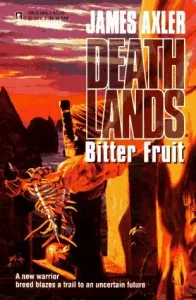 Eventually, I liked the plot for Bitter Fruit. Cryogenically frozen bioterrorists first rebuild the Celtic empire[1] and then plot to wipe out most of the already dregs of humanity that yet remain, a hundred years past the nuclear holocaust that already basically marked the end of the world. Luckily, we know who can probably stop them! (Oh, this is a Deathlands book, if you didn’t actually know yet who could stop them.)
Eventually, I liked the plot for Bitter Fruit. Cryogenically frozen bioterrorists first rebuild the Celtic empire[1] and then plot to wipe out most of the already dregs of humanity that yet remain, a hundred years past the nuclear holocaust that already basically marked the end of the world. Luckily, we know who can probably stop them! (Oh, this is a Deathlands book, if you didn’t actually know yet who could stop them.)
I say “eventually”. While this was not the first book in the series to have a new author, it was the first book where I noticed. Characters subtly out of character[2], a big change in the way book transitions work[3], and most damning, a possible change in the gender egalitarianism of the series. I’m reserving judgment on that last bit, as one data point is not a trendline, but all the same, none of the female characters have ever used sexuality to extricate themselves from danger before this author, so. (The main male character has at times tolerated sex while in danger, which I suppose is technically rape, and also I do not object to using sex as a tool in the toolbox when required. I’m just leery of it from a first time to the series author, after having spoken so much about the quality of the books to date.)
Worst news: this new author will be popping up frequently for a little while. Man I hope someone smacks him around and sets him straight.
[1] Well obviously empire is not the right word here. People isn’t what I want though, and kingdom is nearly as wrong as empire is, albeit a little less inadvertently snide.
[2] Just because you call a dude laconic, if he talks all the time and in much more detail than he used to, I’m both going to notice that and also judge you for not having known what laconic meant in the first place, nameless (unless I went to wikipedia and checked again) Deathlands farm writer!
[3] Instead of “end a book, pick up the next book immediately where the prior book just ended”, this was “end a book, skip forward by about three chapters of what I would have expected to read, but those three chapters wouldn’t make any sense at all if they’d been written, which I guess is why they had to be skipped, but since I noticed, you didn’t actually accomplish much.”
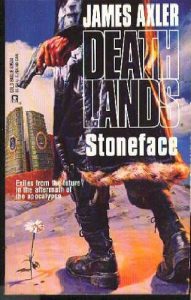
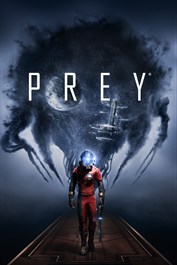 For all that it’s five years old,
For all that it’s five years old, 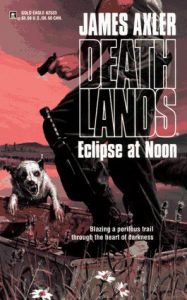 A thing you would have no real reason to remember:
A thing you would have no real reason to remember: 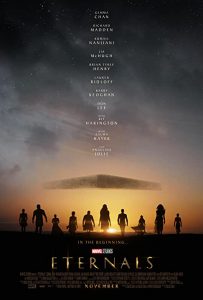 Retroactive continuity is a tool honed to perfection in two art forms[1]: soap operas and superhero comic books. These forms share a lot else in common. They are a) both extremely long-form storytelling where b) the people writing today do not have a plan past the next ten or twelve episodes at the most, c) they both have cliques of characters that mostly hang out together but occasionally cross over with other cliques, and even more rarely all come together for some kind of huge event, and they both d) have dedicated, opinionated fanbases who have stuck around for decades but e) are written so that someone can drop in at practically any moment and be able to catch up.
Retroactive continuity is a tool honed to perfection in two art forms[1]: soap operas and superhero comic books. These forms share a lot else in common. They are a) both extremely long-form storytelling where b) the people writing today do not have a plan past the next ten or twelve episodes at the most, c) they both have cliques of characters that mostly hang out together but occasionally cross over with other cliques, and even more rarely all come together for some kind of huge event, and they both d) have dedicated, opinionated fanbases who have stuck around for decades but e) are written so that someone can drop in at practically any moment and be able to catch up.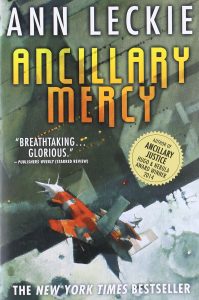 I finished Anne Leckie’s Ancillary trilogy yesterday, and it comes with a realization that I had completely failed to anticipate what the story was actually about.
I finished Anne Leckie’s Ancillary trilogy yesterday, and it comes with a realization that I had completely failed to anticipate what the story was actually about.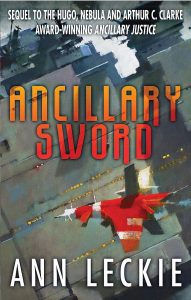 Look at me, cleaning up my partially-read series backlog. Woo! But also, it’s nice in this case because I still remembered at least a little bit of
Look at me, cleaning up my partially-read series backlog. Woo! But also, it’s nice in this case because I still remembered at least a little bit of  After three previous movies, one of which I didn’t see,
After three previous movies, one of which I didn’t see, 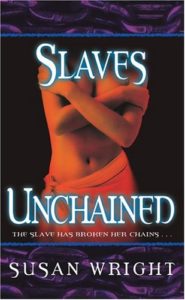 I started reviewing things here in September of 2004. The first two books of the Slave Trade trilogy were published in 2003, and
I started reviewing things here in September of 2004. The first two books of the Slave Trade trilogy were published in 2003, and 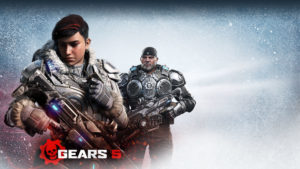 Back at the dawn of time, I played
Back at the dawn of time, I played